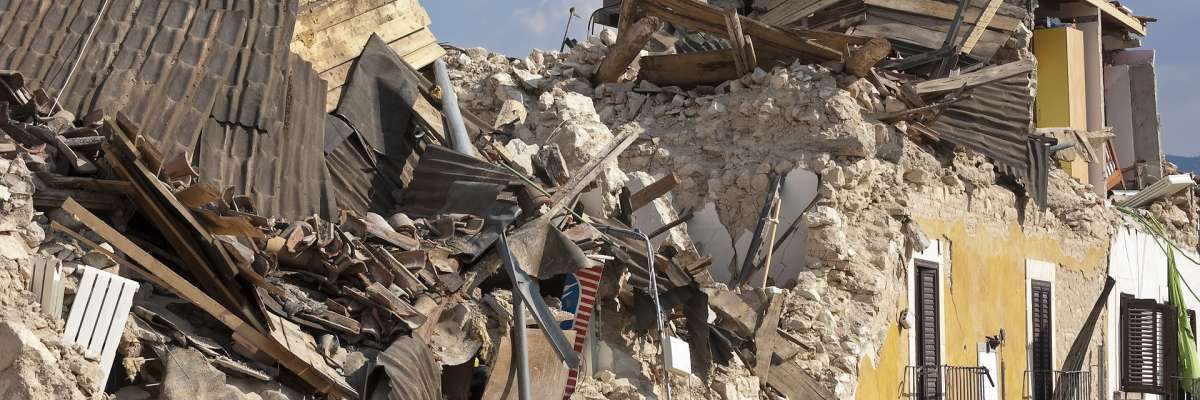
REPSODY examines the interaction between seismic waves, soils and structures to prevent potential damage to buildings and other structures. Contributing to reducing vulnerability to earthquake and vibration risks using innovative solutions is a major issue. In this context, a multi-disciplinary approach combining seismology, geotechnics, mechanics and dynamics of soils and structure is considered.
Site: Sophia-Antipolis; 7 permanent staff.
Risks in French regions are increasing due in particular to artificialisation of land and also climate change. These phenomena must be taken into account in development, infrastructure projects and adaptation of public policies. There are major challenges on the human, material and economic levels. Whether on the scale of cities or more generally at a national level, population and population density are constantly increasing.
Improvement of knowledge about natural phenomena and consideration of the consequences of increasing exploitation of regional resources are absolutely vital areas of study today, in order to attempt to improve protection and resilience against these risks. The REPSODY team proposes to contribute to improving knowledge about the vulnerability and exposure of buildings and civil engineering and geological structures with regard to seismic and vibration risks.
Recent disasters such as in Haiti (2010), Japan (2011, 2016), Nepal (2015), and Italy (2009, 2016) regularly remind us of the need for knowledge about this risk, in order to manage it more effectively. Prediction of movements likely to occur on the ground’s surface enable civil engineers in the long term to dimension their structures in accordance with earthquake resistance standards and to define seismic micro-zoning for normal and listed buildings. It is indeed vital to take account of all the physical phenomena involved: from the fault to the response of the built environment and its interaction with the surrounding ground. The aim is to better understand the most complex phenomena (some of which are still not fully known) using various methods and scales of work.
When characterising a seismic risk, it is necessary, in addition to characterising the hazard itself, to evaluate the seismic vulnerability of geological systems and built structures. In this context, seismological recordings on different scales (earthquake, micro-earthquake, background noise) contribute directly to characterising this vulnerability over a period of time. For example, geophysical measurements based on recordings of seismic background noise are being used increasingly to characterise and monitor unstable geological masses and Railway Engineering structures. New signal processing techniques adapted to these types of object also need to be investigated.
There is also an increasing need to take account of man-made vibrations generated during construction and operation of infrastructures, in an environmental context that is changing considerably, and where the urban fabric is becoming more and more dense. Due to the possible effects of vibrations on existing buildings we have to take into consideration different types of potentially harmful dynamic loads, and to represent them accurately using recently designed tools. In addition, recording of vibrations and their variation over a period of time is the basis for new structural inspection technologies. They detect anomalies in time series of collected values which are then compared to initial values, often associated with satisfactory condition of the monitored structures.
The aim of the Repsody team is to help reduce vulnerability to seismic and vibration risks by proposing innovative solutions. To do so, it examines in great detail the knowledge and techniques required to characterise the impact of dynamic loads on man-made systems (transport infrastructures, buildings, etc.) and geological systems (unstable masses, resulting landslides, etc.), by making use of measurement, analytical approaches and digital modelling of seismic wave-soil-structure interactions
The project is organised in 3 axes:
1. On site dynamic experimentation
2. Digital prediction of seismic and vibratory movement
3. Empirical prediction of seismic and vibratory movement
The team aims to:
- Better understand the variation of the seismic/vibratory source in space and time.
- Characterise the geometric and mechanical properties of soils and sub-soils using seismic imagery.
- Dynamically characterise man-made and natural structures over a period of time by estimating modal parameters by means of instruments./li>
- Draw up effective methodologies for instrumentation of the structures in order to measure dynamic loads for the definition of threshold levels.
- Digitally model the dynamic behaviour of soils and structures.
- Make progress in the empirical assessment of ground movements and non-linear response of sites.
- Define empirical laws for the dynamic response of structures according to their geometry.
- UMR Géoazur (within which Repsody is an associated team),
-
RAP-RESIF,
-
UGE (Université Gustave Eiffel),
-
INERIS,
-
BRGM,
-
Irstea,
-
EDF,
-
SNCF networks,
-
RATP,
-
Eiffage,
-
Egis,
-
Sage
Ophelie Rohmer
“Influence combinée des effets de site et du bâti sur le champ d’ondes sismiques en surface” (Combined influence of the effects of sites and buildings on the seismic wave field on the surface), supervised by E. Bertrand and co-supervised by J. Regnier. SFA doctoral school, Université Côte d’Azur
Danis Pacheco
“Etude de la réponse sismique du bassin de Quito (Equateur) à partir de données sismologiques” (Study of the seismic response of the Quito basin (Ecuador) based on seismological data), supervised by F. Courboulex (Dr. CNRS, GEOAZUR) and co-supervised in the team by D. Mercerat. SFA doctoral school, Université Côte’Azur.
David Castro-Cruz (2018)
“Prédiction empirique des mouvements sismiques forts : apport de l’analyse du comportement non-linéaire des sols et de l’approche des fonctions de Green empiriques” (Empirical prediction of strong seismic movements: contribution of analysis of non-linear soil behavior and of the empirical Green’s Functions approach), supervised by F. Courboulex (CNRS), supervised in the team by E. Bertrand
Simon Chabot (2018)
“Modélisation numérique de la propagation des ondes par une méthode éléménts finis Galerkin discontinues : prise en compte des rhéologie non-linéaires” (Digital modelling of wave propagation by a discontinuous Galerkin fine element method: consideration of non-linear rheologies), supervised by L-F. Bonilla (Ifsttar), supervised in the team by N. Glinsky
You have a question ?

